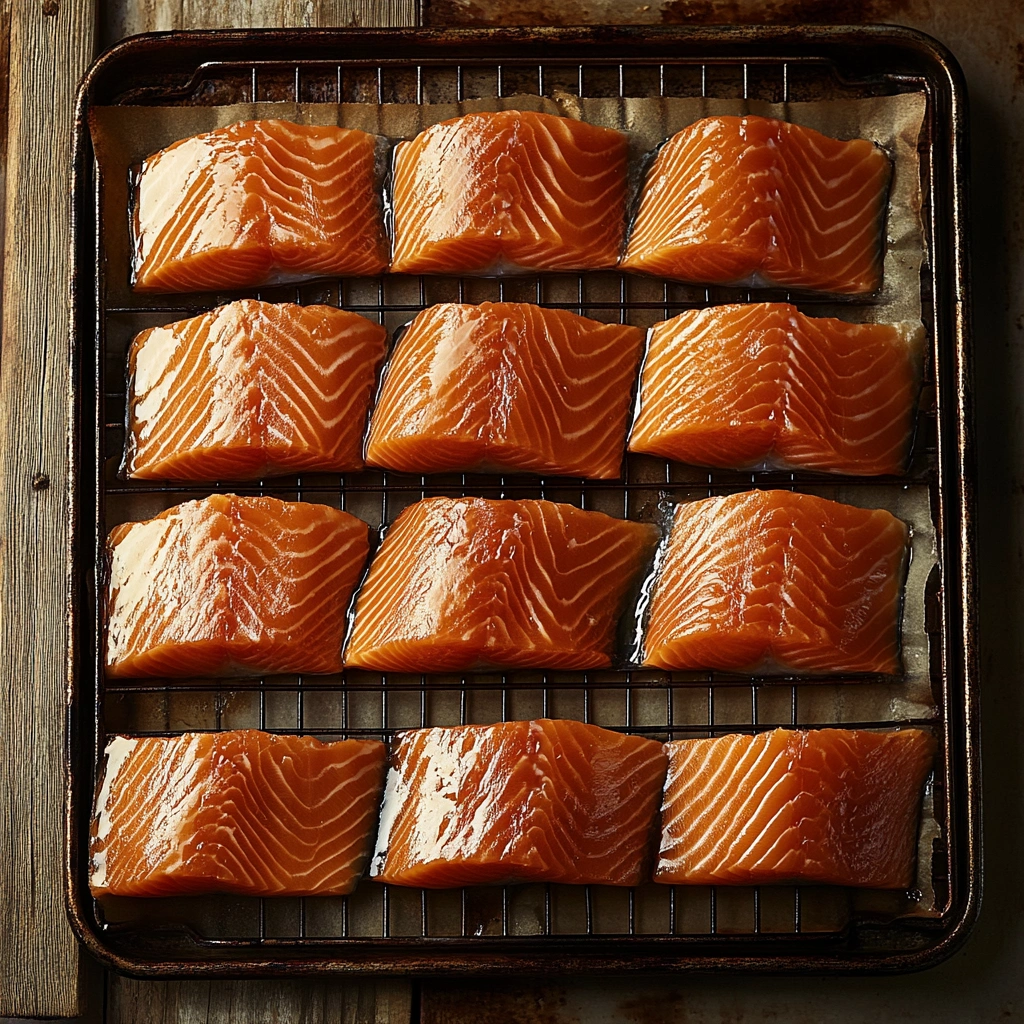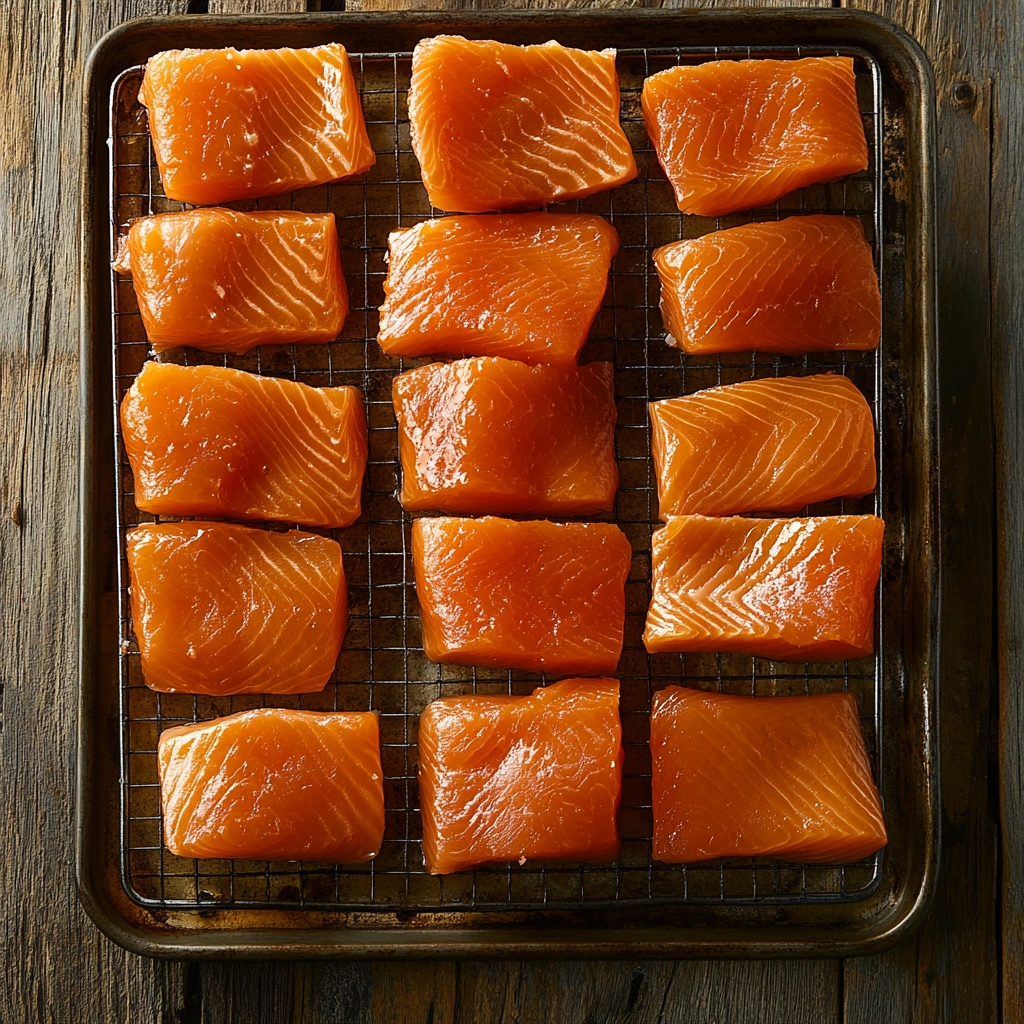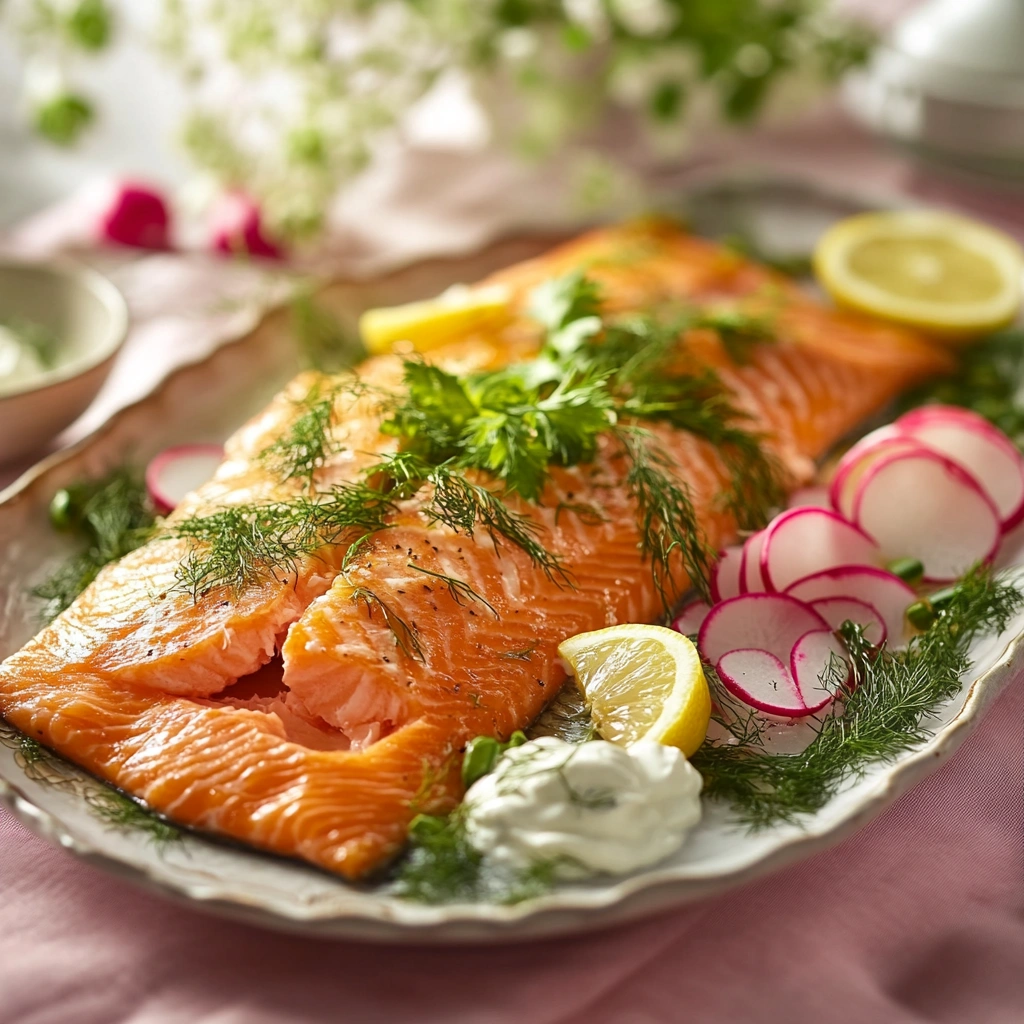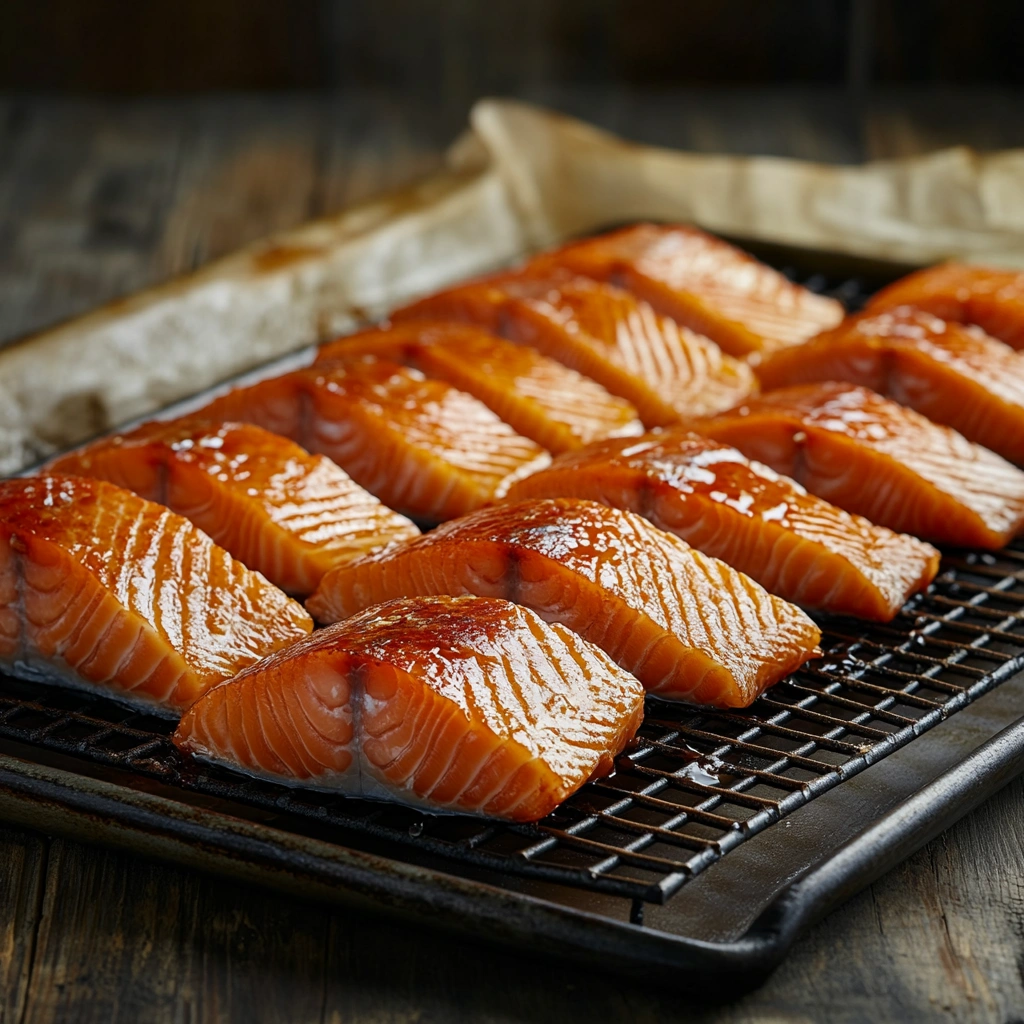Smoked Salmon is a timeless delicacy enjoyed across cultures, from traditional Indigenous smoking methods to modern gourmet cuisine. Its rich, smoky flavor, delicate texture, and nutritional benefits make it a sought-after ingredient in fine dining and home kitchens alike.
This article explores the origins of Smoked Salmon, its cultural significance, the best salmon species for smoking, and the differences between hot and cold smoking techniques. Whether you’re a seafood enthusiast or a home cook looking to experiment, understanding Smoked Salmon is essential for appreciating its taste and quality.
For additional insights, visit Smoked Salmon Guide.
Introduction: The Appeal of Smoked Salmon
Why Smoked Salmon is a Beloved Delicacy
Smoked Salmon is valued for its deep umami flavor, which results from carefully controlled smoking techniques. People enjoy it for:
- Its versatility: Smoked Salmon is perfect for bagels, salads, pasta, sushi, and gourmet appetizers.
- Its rich nutritional profile: A great source of omega-3 fatty acids, high-quality protein, and essential vitamins.
- Its balance of texture: Depending on the smoking method, it can be silky and tender (cold-smoked) or flaky and firm (hot-smoked).
The Balance of Flavor, Texture, and Nutrition
Smoked Salmon offers a harmonious balance of smoky, salty, and buttery flavors. It retains the natural oils of the fish, making it:
- Moist and rich, with a delicate mouthfeel.
- Infused with smoky depth, depending on the type of wood used.
- Nutritious, containing healthy fats, vitamins B12 and D, and antioxidants.
Overview of Traditional and Modern Smoking Techniques
Smoking salmon has evolved over centuries, from ancient Indigenous preservation methods to modern specialty smoking techniques used in gourmet kitchens. There are two main methods:
- Cold Smoking – Produces a smooth, silky texture with a subtle smokiness.
- Hot Smoking – Creates a cooked, flaky texture with a deeper, roasted flavor.
For an in-depth guide on modern smoking methods, visit Smoked Salmon Guide.
The History and Cultural Significance of Smoked Salmon
Indigenous Smoking Techniques in the Pacific Northwest
Before refrigeration, Indigenous communities in the Pacific Northwest developed advanced methods for preserving wild-caught salmon. They:
- Smoked salmon over open fires, using alder, maple, or cedar wood.
- Air-dried fish in smokehouses for long-term storage.
- Created hard-smoked “jerky-style” salmon to sustain them through the winter.
These traditional methods are still used today, especially among Native American and First Nations communities.
The Evolution of Smoked Salmon in European Cuisine
Smoked Salmon became a culinary staple in Europe, especially in:
- Scotland and Ireland: Cold-smoked salmon became a luxurious ingredient in high-end cuisine.
- Scandinavia: Nordic countries perfected gravlax, a cured salmon that complements smoked varieties.
- Russia: Smoked fish is central to traditional Russian meals, often paired with black bread and vodka.
How Smoking Fish Became a Preservation Method
Before refrigeration, smoking was essential for preserving perishable fish. The smoking process:
- Removes moisture, preventing bacterial growth.
- Enhances flavor while extending shelf life.
- Adds a distinct smoky aroma, making it highly desirable.
To explore another traditional preservation technique, check out Ultimate Branzino Recipe Guide.
Choosing the Right Salmon for Smoking
Wild vs. Farmed Salmon: Pros and Cons
The quality of Smoked Salmon largely depends on the type of fish used. There are two main options:
| Type | Pros | Cons |
|---|---|---|
| Wild Salmon | Richer flavor, firmer texture, high in omega-3s | More expensive, seasonal availability |
| Farmed Salmon | More accessible, affordable, consistent fat content | Can be lower in omega-3s, concerns about sustainability |
The Best Salmon Species for Smoking
Not all salmon varieties are ideal for smoking. Some of the best options include:
- King Salmon (Chinook): Highest fat content, rich flavor, perfect for cold smoking.
- Sockeye Salmon: Deep red color, leaner texture, ideal for hot smoking.
- Coho Salmon: Mild flavor, balanced fat-to-protein ratio for both smoking methods.
For a detailed breakdown of seafood choices, visit Smoked Salmon Guide.
Sustainability and Ethical Sourcing Considerations
With rising concerns over overfishing and environmental impact, choosing sustainably sourced salmon is essential. Look for:
- Wild-caught options with MSC (Marine Stewardship Council) certification.
- Responsibly farmed salmon from eco-certified fisheries.
- Local sources that prioritize ethical fishing practices.
For another sustainable seafood recipe, check out Ultimate Branzino Recipe Guide.

Hot Smoking vs. Cold Smoking: What’s the Difference?
Key Differences in Temperature and Texture
Hot and cold smoking result in two distinct textures and flavors:
| Method | Temperature | Texture | Flavor |
|---|---|---|---|
| Cold Smoking | 70–90°F (20–32°C) | Silky, smooth | Subtle smokiness |
| Hot Smoking | 120–180°F (49–82°C) | Firm, flaky | Deep, robust smoke flavor |
The Safety Concerns of Cold Smoking
Cold smoking requires careful handling since the fish remains uncooked. To minimize health risks:
- Use high-quality, fresh salmon.
- Cure it properly with salt and nitrates.
- Store at proper refrigeration temperatures to prevent bacteria growth.
Which Method is Best for Home Smoking?
For beginners, hot smoking is the safer and more approachable option, as it:
- Cooks the salmon fully, reducing food safety concerns.
- Requires less curing time.
- Provides a more intense smoked flavor, ideal for grilling and serving warm.
For expert guidance on home-smoking techniques, visit Smoked Salmon Guide.
Preparing Salmon for Smoking
The Importance of Curing (Wet Brine vs. Dry Rub)
Curing is a critical step in preparing smoked salmon, as it removes excess moisture, enhances flavor, and prevents bacterial growth.
There are two primary curing methods:
- Wet Brine: A liquid-based cure made from water, salt, sugar, and seasonings.
- Dry Rub: A mixture of salt, sugar, and spices rubbed directly onto the salmon.
Which method is better?
- Wet brine: Produces a milder, more evenly seasoned salmon with a slightly softer texture.
- Dry rub: Results in a firmer texture with a more concentrated smoky flavor.
How Long to Cure for Optimal Flavor
The curing time affects the final taste and texture:
- Light cure: 4–6 hours for a subtle flavor.
- Standard cure: 8–12 hours for a balanced saltiness.
- Intense cure: 24 hours or more for a deep, bold flavor.
The Role of Salt, Sugar, and Seasonings in the Curing Process
- Salt: Extracts moisture and prevents spoilage.
- Sugar: Balances the saltiness and enhances natural flavors.
- Seasonings: Dill, black pepper, garlic, or citrus zest can add complexity.
For another seafood preparation technique, check out Ultimate Branzino Recipe Guide.

Essential Equipment for Smoking Salmon
Choosing the Right Smoker: Electric, Charcoal, or Gas
The type of smoker you use influences the flavor and ease of smoking.
| Smoker Type | Pros | Cons |
|---|---|---|
| Electric Smoker | Precise temperature control, beginner-friendly | Less smoke flavor |
| Charcoal Smoker | Rich, traditional smoky taste | Requires manual temperature control |
| Gas Smoker | Convenient, consistent heat | Less smoky than charcoal |
For home smoking, an electric or gas smoker is the easiest to control, while charcoal provides a deeper flavor.
Wood Chips and Planks: Best Types for Salmon
The choice of wood affects the flavor profile of smoked salmon.
- Alder: Classic mild smokiness (great for delicate flavors).
- Applewood: Slightly sweet, complements fatty salmon.
- Hickory: Strong and bold, ideal for intense smoky depth.
- Cherrywood: Adds a touch of fruitiness.
Using a Grill or Stovetop for Smoking at Home
If you don’t own a smoker, you can still smoke salmon at home using a:
- Gas or charcoal grill: Indirect heat with a smoking box or soaked wood chips.
- Stovetop smoker: A covered pan with a small rack over smoldering wood chips.
For a guide to grilling fish, check out Smoked Salmon Guide.
Step-by-Step Guide to Smoking Salmon at Home
Prepping the Salmon: Curing, Drying, and Forming the Pellicle
After curing, the salmon must be rinsed and dried before smoking.
- Rinse off excess salt and sugar under cold water.
- Pat dry with paper towels and place on a rack.
- Allow the salmon to air-dry for 1–2 hours until a tacky pellicle forms (this helps smoke adhere better).
Setting Up the Smoker for Even Heat Distribution
- Preheat the smoker to 120°F (49°C) for hot smoking or 80°F (27°C) for cold smoking.
- Add wood chips (choose alder, apple, or hickory for the best results).
- Arrange salmon fillets skin-side down on the smoker rack.
Monitoring Temperature and Cooking Time for Perfect Results
- Cold Smoking: 12–24 hours at 70–90°F (21–32°C).
- Hot Smoking: 2–4 hours at 120–180°F (49–82°C) until the internal temperature reaches 145°F (63°C).
For more details on smoking times and techniques, visit Smoked Salmon Guide.
Storing and Preserving Smoked Salmon
How Long Smoked Salmon Lasts in the Fridge
Proper storage is essential to maintain freshness.
- Refrigerated: Lasts 5–7 days when kept in an airtight container.
- Vacuum-sealed: Can last up to 3 weeks in the fridge.
Freezing Tips to Extend Shelf Life
To freeze smoked salmon properly:
- Wrap individual portions in plastic wrap to prevent freezer burn.
- Place wrapped portions in a freezer-safe bag, removing excess air.
- Label and date before freezing.
- Frozen smoked salmon lasts up to 3 months for best flavor.
Best Ways to Reheat and Serve Smoked Salmon
Smoked salmon is often served cold, but if you want to warm it up:
- Oven: Wrap in foil and heat at 275°F (135°C) for 10 minutes.
- Stovetop: Sear lightly on medium heat for 1–2 minutes.
- Microwave: Use low power and heat in short intervals.
For more storage and reheating tips, visit Smoked Salmon Guide.

Delicious Recipes and Serving Ideas
Salmon prepared this way is incredibly versatile, making it a staple in breakfast dishes, appetizers, and gourmet meals.
Classic Bagel with Cream Cheese and Salmon
One of the most iconic pairings features this cured fish on a toasted bagel with cream cheese.
How to make it:
- Spread cream cheese on a warm bagel.
- Layer thin slices of the fish on top.
- Add capers, red onion, and fresh dill for a flavorful contrast.
- Squeeze fresh lemon juice for brightness.
Salmon Pasta and Risotto Dishes
Adding it to pasta or risotto creates a rich, umami-packed meal.
For a quick pasta dish:
- Toss pieces with linguine, garlic, olive oil, and parmesan.
- Finish with fresh parsley and lemon zest.
For a creamy risotto:
- Stir small portions into hot risotto just before serving.
- Add chives and mascarpone for extra creaminess.
Creative Appetizers and Spreads
This ingredient is perfect for elegant appetizers at any gathering.
- Crostini: Serve it on toasted bread with herbed cream cheese and microgreens.
- Dip: Blend with cream cheese, lemon juice, and dill for a spreadable treat.
- Cucumber bites: Wrap slices around cucumber rounds with a dollop of yogurt.
For more recipe inspiration, visit Smoked Salmon Guide.
Health Benefits of Eating Smoked Fish
This preparation method preserves many of the natural nutrients found in fresh salmon, making it a healthy option when consumed in moderation.
Rich in Omega-3s for Heart Health
- Contains high levels of omega-3 fatty acids, which support brain and cardiovascular health.
- Helps reduce inflammation, lower blood pressure, and improve cholesterol levels.
High in Protein, Low in Carbs
- A great source of lean protein, beneficial for muscle growth and recovery.
- Naturally low in carbohydrates, making it ideal for keto and low-carb diets.
Sodium Levels and Processed Varieties
- Some store-bought versions contain high amounts of sodium due to curing.
- Making it at home allows you to control salt levels and avoid unnecessary preservatives.
For another high-protein seafood dish, check out Ultimate Branzino Recipe Guide.
Common Mistakes When Smoking Fish (and How to Avoid Them)
Even with the best ingredients, small mistakes can affect the final texture and flavor.
Over-Smoking or Under-Curing
Problem: Leaving it in the smoker for too long results in a dry, overly bitter taste.
Solution:
- For cold smoking, keep it between 12–24 hours at 70–90°F (21–32°C).
- For hot smoking, stick to 2–4 hours at 120–180°F (49–82°C).
Using the Wrong Type of Wood
Problem: Some woods, like mesquite or oak, create an overpowering smoke flavor.
Solution: Use mild or fruity woods for balance:
- Alder – A classic choice with subtle smokiness.
- Applewood – Slightly sweet, pairs well with rich fish.
- Cherrywood – Adds mild fruit notes without overpowering.
Avoiding Dry or Overly Salty Results
Problem: Leaving the fish in a brine or dry rub too long can make it overly salty.
Solution:
- For a mild cure, leave it in brine for 4–6 hours.
- For a stronger flavor, cure for 8–12 hours, but rinse well before smoking.
For additional smoking tips, visit Smoked Salmon Guide.
Final Thoughts on Smoking Your Own Salmon
This centuries-old preservation method enhances flavor, texture, and shelf life, making it a staple in gourmet and home kitchens.
Why Making It at Home Is Worth the Effort
- Customize flavors – Adjust curing times, seasoning blends, and wood choices.
- Avoid preservatives – Many commercial brands contain artificial additives.
- Save money – High-quality smoked salmon is often expensive in stores.
Experimenting with New Flavors
Try different seasoning blends, such as:
- Lemon-pepper for a bright, citrusy profile.
- Maple-glazed for a hint of sweetness.
- Spicy chili-infused for bold heat.
Try It Yourself and Share Your Experience
Making this dish at home is a rewarding process. Whether you prefer hot or cold smoking, experimenting with different woods, brines, and curing techniques can help you discover your perfect flavor profile.
For a step-by-step guide, visit Smoked Salmon Guide.
For further reading on smoking techniques, check out Allrecipes: Smoking Fish Guide.


1 thought on “Smoked Salmon: Tools, Ingredients, and Tips”